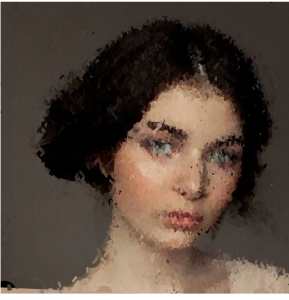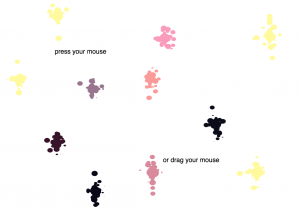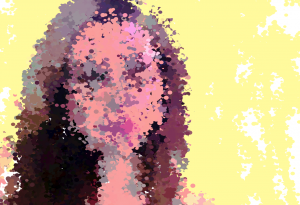I had a lot of fun with this project once I got the preliminaries set up. I started out thinking that I wanted to have an image recreated by pixilation when the mouse scrolled over the image. But then I realized that that wouldn’t work because of the constant mouse movement. So I decided to create a more fun portrait. The subject’s last name is displayed mainly opaque and then the picture is displayed with a spotlight on top of it. I spent a lot of time on this image but I still want to continue working on it.
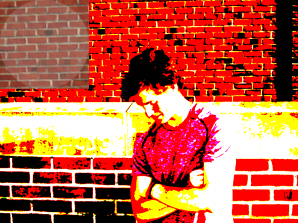 beginning
beginning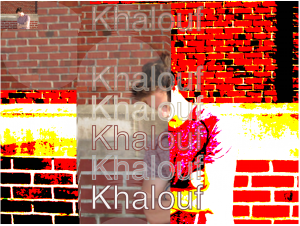 after one movement with the mouse
after one movement with the mouse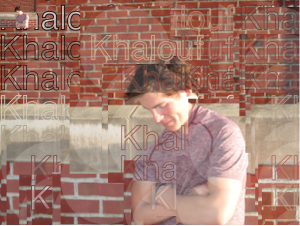 after scrolling over the image multiple times
after scrolling over the image multiple times
sketch
//Naomi Shimada
//Section D
//nshimada@andrew.cmu.edu
//Assignment-09-B
var img;
var inloc = "http://i.imgur.com/XTKXPpa.png";
var distThreshold = 20;
var underlyingImage;
function preload() {
img = loadImage(inloc);
underlyingImage = loadImage(inloc);
underlyingImage.loadPixels();
}
function setup() {
createCanvas(400,300); //sets up on the background image
image(img,0,0);
filter(POSTERIZE,2);
}
function draw(){
for (var y = 0; y < height; y +=40){
for (var x = 0; x < width; x +=40) {
if (nearMouse(x, y, distThreshold)) {
var c = underlyingImage.get(mouseX,mouseY);
stroke(c); //the stroke color is determined on the pixel underneath
strokeWeight(1); //creates the last name of the subject, Khalouf
textSize(45);
fill(255,255,255,20);
text("Khalouf", x,y);
push();
image(underlyingImage, 0, 0, underlyingImage.width / 8, underlyingImage.height / 8);
var x = constrain(mouseX, 0, img.width - 1); //redraws the image based on mouse X and Y
var y = constrain(mouseY, 0, img.height - 1);
// get a subrectangle from image. x and y (upper left corner)
// should be within the image.
var smaller = img.get(x, y, 100, 100);
image(smaller,x, y, 120, 120);
fill(255,255,255,40);
ellipseMode(CORNERS); //puts a "spotlight" on the center of the image
noStroke();
strokeWeight(0);
ellipse(x,y,x+120,y+120);
pop();
}
}
}
}
function nearMouse(x, y, d) {
return dist(x, y, mouseX, mouseY) < d;
}
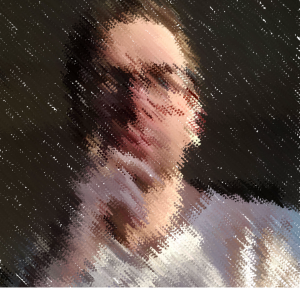
![[OLD – FALL 2016] 15-104 • COMPUTING for CREATIVE PRACTICE](../../wp-content/uploads/2020/08/stop-banner.png)
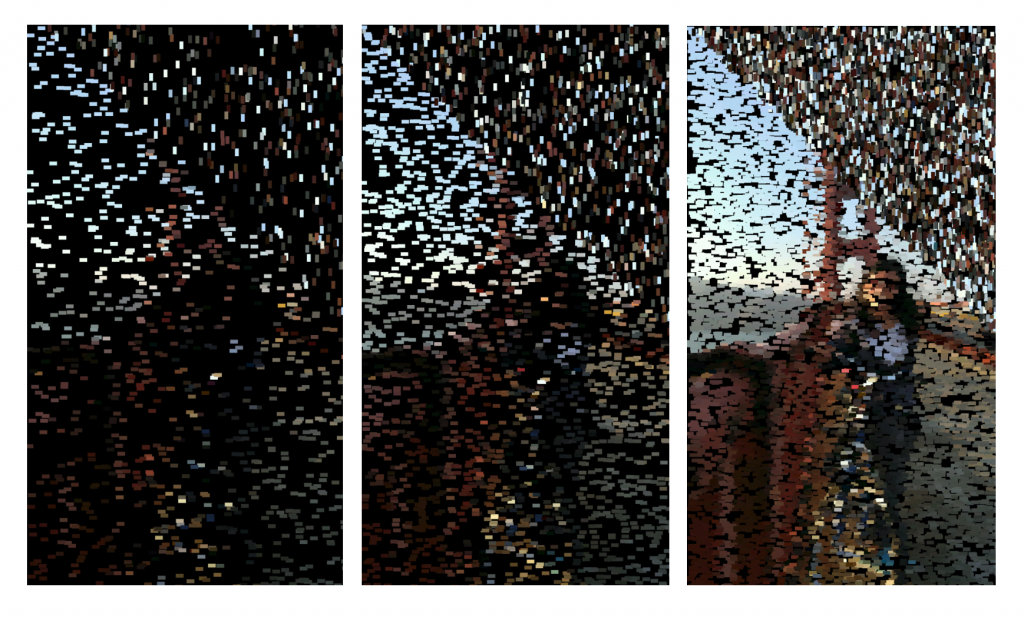
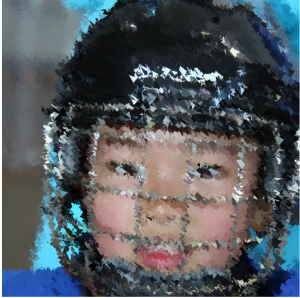
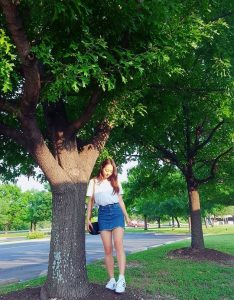
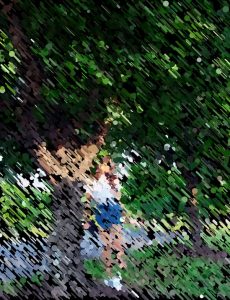
 .
. beginning
beginning after one movement with the mouse
after one movement with the mouse after scrolling over the image multiple times
after scrolling over the image multiple times
